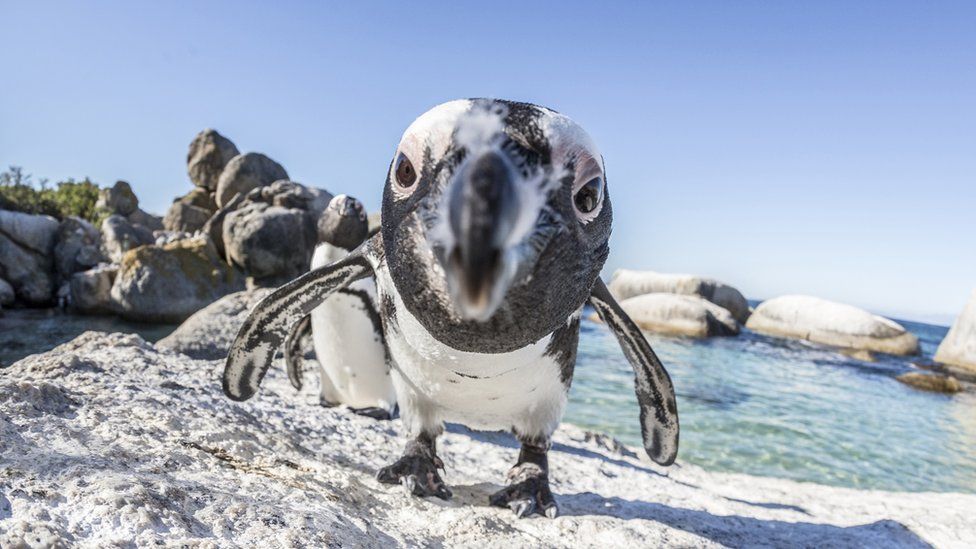
By Esme Stallard
Climate and science reporter, BBC News
The world’s most vulnerable migratory species face an increasing risk of extinction, a landmark UN report warns.
From turtle doves to green turtles, from the European eel to the African penguin, migratory species are the great explorers of the animal kingdom.
They play an essential role in protecting the Earth’s habitats by transferring nutrients, pollinating and maintaining woodlands.
But decades of exploitation has left “species on the edge of extinction”.
More than 40 years ago, many of the world’s nations signed an agreement to protect the world’s migrating species, known as the Convention on the Conservation of Migratory Species of Wild Animals (CMS).
Now, a first global assessment has been undertaken looking at the numbers and health of these animals.
Of the 1,189 species assessed, the researchers found one in five are threatened with extinction. For some species the situation is much worse – 97% of fish listed under the convention are at risk.
Amy Fraenkel, the UN Executive Secretary to the convention, told the BBC: “There has been a lack of attention for migratory species and if we don’t succeed in turning this around, we will see extinction. There are species that are already on the edge”.
The report’s overwhelming conclusion is that the decline is driven by human activity – excessive hunting and killing of animals, habitat destruction, climate change and the expansion of towns and cities bringing noise and light pollution.
Dr Rob Cooke, an ecological modeller at the UK Centre for Ecology and Hydrology, said the report shows: “Migratory species face a cocktail of threats because they are moving through different habitats”.
- Turtle swept 4,000 miles across ocean flies home
- World’s first IVF rhino pregnancy ‘could save species’
- Penguin finds ‘guide bird’ in one of her friends

Ms Fraenkel said although countries signed the convention four decades ago, “clearly some of these findings show there is illegal killing going on and lack of upholding the law”.
She said there has been a lot of work done to prevent the illegal trading of animals but less focus on animals that are killed for sport, leisure and food, and never traded.
It is estimated that between 11 and 36 million birds are illegally killed or taken annually in the Mediterranean region, with a further few million estimated to be illegally killed or taken in the Arabian Peninsula, Iran and Iraq.
Kelly Malsch, lead author of the report and head of UNEP-WCMC’s Species Programme, said it is also the very nature of migration that makes it challenging to protect these animals. Some, like the Monarch Butterfly, will travel thousands of miles over a dozen country borders.
She told the BBC: “Whether it is birds, or animals on land, or those swimming in our oceans, they are interacting with different country regulations which highlights the need for consistent approaches.”

The report recommends that:
- Countries identify sites on the migration pathways of the most at risk animals and establish key biodiversity areas
- Reduce infrastructure impacting migration pathways, such as dams
- Create corridors of protected land
- Ensure 30% of degraded land and marine areas are restored
By mapping migration corridors, it is hoped that animals can be protected from human activities. One of the biggest threats facing sharks and rays is being incidentally fished as bycatch. Satellite imagery has previously revealed that there is extensive overlap between the areas used by migrating sharks and those frequented by global fishing fleets.
Inger Andersen, executive director of the UN Environment Programme, said she remains optimistic. “There is hope,” she added.
Some species have seen their populations climb thanks to conservation efforts. The South Atlantic population of Humpback Whales numbered just 450 in the mid-1950s after being extensively hunted. Following the introduction of protections, there are now estimated to be more than 25,000.

Dr Cooke welcomed the report but said there were still thousands of migratory species, particularly insects, not currently assessed. Only one insect is listed under the CMS.
“This is a clear area to improve on,” he said.
Insect populations are difficult to measure – their small frames means they cannot wear trackers, and some, like dragonflies, cannot be easily seen as they do not swarm like birds.
On Sunday, government officials https://perjuangangila.com/ began gathering in Uzbekistan to develop a coordinated plan in response to this research.